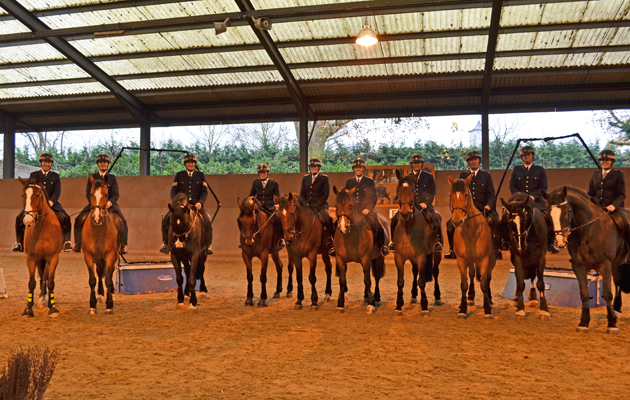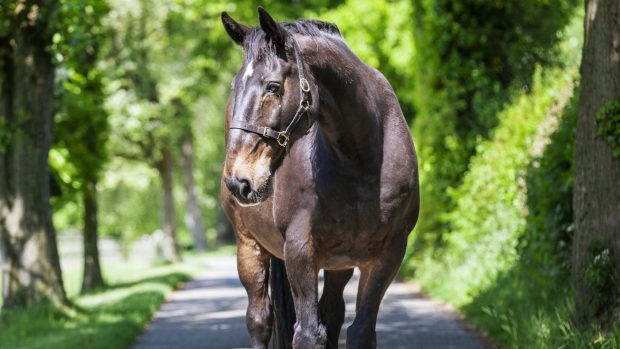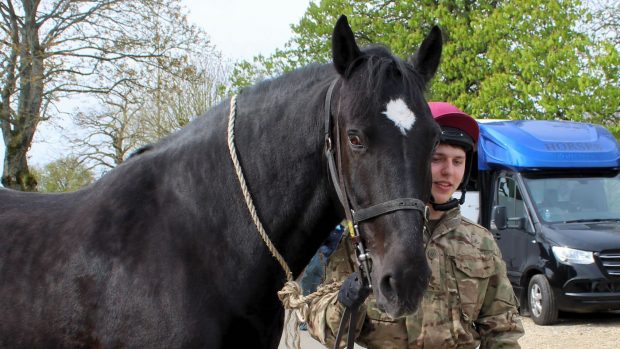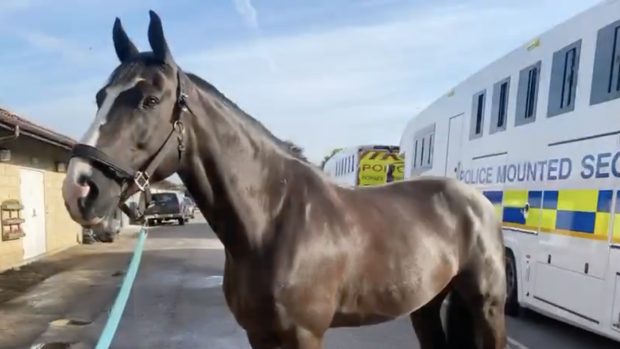This year, the Metropolitan Police bring their activity ride to the London International Horse Show at Olympia (16-22 December). Far from being a show created purely for entertainment’s sake, the horses (and riders) participating are all on active service and will be back out on duty just days after Olympia.
Though jumping through fire and negotiating hazards is great craic for the Christmas crowds, the work is actually all part and parcel of a police horse’s basic training. The London riots proved that; with pictures abounding of these amazing animals boldly tackling fire and aggressive crowds, while debris and items were being thrown at them.
The H&H team were invited to visit South London’s Imber Court — the hub of the Metropolitan mounted branch — ahead of Olympia, to see first-hand the time and dedication involved to train a horse to trust its rider in challenging circumstances. Police horses have been trained at Imber Court (originally Ember Court, but mis-heard and erroneously recorded by a councilor) since 1920. The care is meticulous and much more individually tailored than I had imagined.
The Met buys young horses, generally between four and six years old. The preference is for Irish draught-thoroughbred crosses, but they consider any suitable horse over 16hh.
The budget is not large — they expect to pick up each mount for around £3,000.
Horses first come to Imber Court for initial evaluation and a one-month trial. Once deemed suitable, they are trained, then sent out to one of the seven Met stables around London: Bow, Hyde Park, West Hampstead, Hammersmith, Lewisham, New Scotland Yard and King’s Cross.
Horse welfare has always been paramount in the Met, as happy, sound horses can serve for longer. To this end, there has been significant investment at Imber Court to turn all the standing stalls — where horses were always tied to the wall — into loose boxes. All horses can now move freely around their boxes and the incidence of stable vices has dramatically decreased, Sergeant Wilkinson-Begg tells me.
Turnout has also become a focus, with paddocks installed around the cross-country course, and field time a priority. Horses all have a minimum of a two-week holiday annually, too.
Rebel by name
The horse I was assigned was a chunky, kind grey five-year-old gelding called Rebel. I was told that despite only been serving for a couple of weeks, he’d already caught a burglar.
I joined the remount ride — for horses still in training — along with four other riders in the small indoor school.
Adam, the trainer, impressed upon us that the most important thing when riding as a group is to keep in formation: to be in the right place at the right time. Everything else is secondary, which is in total contrast to the riding I’m used to. For police horses, the way of going is not the priority.
I tried to keep in line as best I could, but it’s so much harder than it looks, and I had to keep reminding myself that Rebel being on the bit was less important than keeping the right distance between us and the horse in front.
When they brought out the “hazards”, I could feel my heart rate rise. The arena was filled with dozens of tennis balls, tarpaulins, a scarecrow-type grim reaper, flags, an over-size rugby ball, mattresses, shopping trolleys and stuffed human-shape dummies. Pretty damn spooky.
Adam ordered us to continue riding the arena shapes as directed.
The horses have to learn to go through and past the hazards while the mounted officer does his job on board. So the horses learn where to put their feet, rather than always being minutely guided by the rider.
Then the trainers started throwing tennis balls at the walls. The first few really made my heart leap. Rebel was super-cool. I could feel him getting a little nervous, but his training won over and he stayed in formation. The only hiccup was when one of the tennis balls hit us and he shot forward. But he is only five.
Even riding in that controlled environment was a pretty full-on experience, so I can only imagine what it’s like for police officers in genuine football crowds or riots with all the added challenges that brings.
I have renewed respect and awe not only for mounted officers on the beat, but also the brave few who take part in the Olympia demo — they have to remain in formation while jumping bounce fences and holding their jackets in the air.
The not-so-grim reaper
At the end of my session, I tried to pose for a photograph next to the grim reaper, but Rebel nudged him with his nose and the whole thing, sickle and all, went tumbling to the ground (see picture below in which rider is much more spooked than horse). My own horse, who is two years Rebel’s senior, would have spun and run for the hills. Rebel just stood there. These horses really are remarkable.
And of those heading to Olympia next week, only one will have ever been there before, and some are only five years old. It’s testament to the training and horsemanship of the Met team that these happy, confident horses can show off their training in a cauldron-like environment such as Olympia.
Watching the team’s “dress rehearsal” at Imber Court, there was a hairy moment when one rider dropped the saddle he was holding aloft and a horse behind him spooked and bucked off his rider. But, at Olympia, one tumble doesn’t stop the show, so the troop carried on while the rider dusted himself off and hopped back on.
I, for one, will be full of admiration watching these horses and riders next week.
The Met mounted police team will perform their activity ride 13 times at Olympia, London International Horse Show (16-22 December) — once per performance. For tickets visit www.olympiahorseshow.com
Don’t miss our Olympia preview in this week’s issue of Horse & Hound magazine (11 December 2014)







